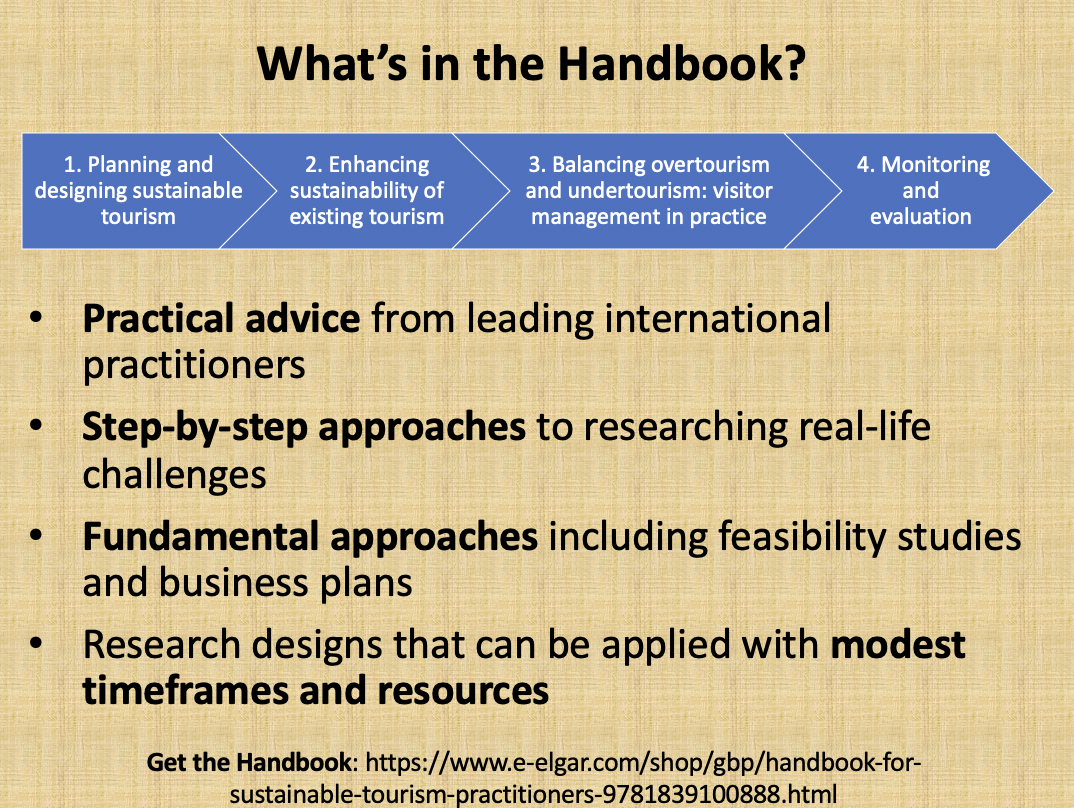In January 2020 I made a declaration to Tourism Declares a Climate Emergency, and my first plan. My commitments included to make an annual report and update the plan. Last year I published a report for 2020, and this is my report for 2021.

Reduce my footprint:
- Continue to participate in meetings remotely by conference call wherever possible, to avoid travel. I didn’t travel to any meetings during 2021. I participated in a number of virtual events to share information about sustainable tourism and the climate emergency, including those in the table below. The virtual symposium on “Crisis response and recovery – nature-based tourism, biodiversity and livelihoods” included a session on “Sustainable Tourism Blueprints and Solutions”, where representatives of the Travel Foundation and Intrepid were invited to share lessons regarding Tourism Declares, the Glasgow Declaration, and moving towards net-zero.
| Conference / Venue / Webinar | Presentation & events | Dates |
| Crisis response and recovery – nature-based tourism, biodiversity and livelihoods, virtual symposium, IUCN WPCA TAPAS Group, Centre for Responsible Travel, WWF, and Arizona State University | Event 1: Recording of Event 1: Session 1: Biodiversity Conservation Financing through Sustainable Nature-Based Tourism – watch here Session 2: Visitors Count: Establishing the Economic Impacts of Tourism in Protected Areas – watch here Session 3: Sustainable Livelihoods and Human Health through Tourism – watch here Event 2: Recording of Event 2: Session 5: The Resurgence of Overtourism in Protected Areas in Crisis Recovery – watch here Session 6: Sustainable Tourism Blueprints and Solutions – watch here |
17/18 November 2021 |
| COVID-19 crisis: Impacts and Recovery in Protected and Conserved Areas in Africa, IUCN Green List, DNPW, GiZ, IUCN WCPA | Sustainable tourism in protected and conserved areas: Impacts and implications of the pandemic in Africa | 29 October 2021 |
| 2021 Virtual Conference on Improving Protected Area Tourism in a Post-COVID World, Centre for Protected Area Management, Colorado State University | Keynote: Protected area tourism & the COVID-19 pandemic: Impacts and implications for sustainable recovery | 11 October 2021 |
| IV International Conference “Sustainable tourism: Global Challenges and Russian Perspective, Russia | Panel event: Sustainable tourism: Global challenges and Russian perspective
Recording available here |
7 October 2021 |
| Ecotourism in protected areas towards green recovery, UNDP Philippines, Manilla | Part 1: Ecotourism in protected areas towards green recovery: Impacts of the pandemic
Recording available here Part 2: Ecotourism in protected areas towards green recovery: Recovery from the impacts |
17 & 24 September 2021 |
| Sustainable & Social Tourism Summit, Cancun, Mexico | Keynote: Sustainable tourism and COVID-19: Impacts and building back better | 7 September 2021 |
| ‘Green List’ tourism recovery for communities in and around protected and conserved areas and World Heritage sites, IUCN World Conservation Congress | Protected area tourism and COVID-19.
Recording available here |
5 September 2021 |
| Visitors Count! Guidance for protected areas on assessing visitation and its economic impacts, Protected Planet Pavilion, IUCN World Conservation Congress | The Tourism and Protected Areas Specialist Group
Recording available here |
4 September 2021 |
| 10th International Conference on Monitoring and Management of Visitors in Recreational and Protected Areas | Keynote: The impacts of the pandemic on tourism in protected and recreational areas. Recording here (Plenary session day 2) | 17 August 2021 |
| Wildlife Tourism Australia, Annual General Meeting | Wildlife tourism amid COVID and recovery options | 21 June 2021 |
| Sustainable Tourism Training for Tomorrow, EUROPARC Webinar | A global perspective on sustainable tourism and the need for skills and capacity building
– Recording and presentation here |
17 June 2021 |
| International Conference on Responsible Tourism and Hospitality (ICRTH), UCSI University, Sarawak, Malaysia | Ecotourism and COVID-19: Impacts, responses and recovery
– Recording here |
27 May 2021 |
| IUCN World Commission on Protected Areas Steering Committee Meeting | COVID-19 and protected area tourism: Impacts and the way forward | 17 May 2021 |
| 2021 ITB Convention, Berlin; ITB Tourism for Sustainable Tourism track | COVID-19 and tourism in developing countries: Needs, challenges and options
– Recording and presentation here |
12 March 2021 |
- Encourage others to present at conferences or meetings that I have been invited, where their carbon footprint for attending will be lower than mine. Done in part. For example, we had hybrid meetings at the IUCN World Conservation Congress in Barcelona, where some participants based in Europe were present in person, and myself based in Papua New Guinea participated remotely. On other occasions, where I could not participate remotely, I would nominate another person to also participate remotely from a more suitable time zone.
- When I do fly for work or leisure, I will select options that generate lower emissions, including combining multiple-destinations on my trips. I made one international trip this year, which was a flight from Papua New Guinea to the UK via Singapore and Doha for leisure. For two domestic flight my family made in 2021, we flew with the national air-carrier, rather than smaller charter aircraft.
- Attend conferences and meetings in person only where my presence can have a meaningful impact by communicating sustainability messages, and when remote participation is not possible. I did not attend any in-person meetings in 2021, and only participated remotely – either in real time, or by sending a recording if the time difference was challenging.
Also, for 2021, I calculated that the carbon footprint of my family was 15.3 tonnes CO2e, which was 61% lower than in 2020. We will continue to work towards reducing this further during 2022.
Offset my impact:
- Offset carbon generated by flights for work and recreation, including through reputable offsetting organisations and/or planting trees with institutions I trust such as the Wilderness Wildlife Trust and others. For 2021 I have offset the 15.3 tonnes of CO2e generated by my family through Climate Care.
- Include carbon offset allocations for flights within future project budgets, and ensure that my clients are aware of this as a direct project cost. Projects that I worked on in 2021 were all remotely based, but for any new assignments that require travel, I will continue to do this.
- Continue to preferentially use Ecosia as my web-browser. I continue to do so on GoogleChrome (but Ecosia seems to be no longer supported on Safari).
Advocate for change:
- Continue through my role as Chair of the IUCN World Commission on Protected Areas (WCPA) Tourism and Protected Areas Specialist Group to promote knowledge and capacity building to support the network’s members. In 2021 we revised the strategy for the TAPAS Group, and included specific reference to encouraging members to sign up to Tourism Declares, and to make a plan. Monitoring and reporting of TAPAS Group member signatories has been initiated for 2021 in annual membership surveys and reported to WCPA.
- Continue to actively contribute as a Board member of the Global Sustainable Tourism Council, to promote the GSTC criteria and sustainable tourism activities that integrate climate actions. In 2021 the GSTC became a launch partner of the Glasgow Declaration.
- Continue to work on sustainable tourism assignments on projects that embed climate actions within them, and with clients who are addressing climate change. Done, including through (a) a World Bank project in Uganda on community-based tourism, to support them in light of the COVID-19 pandemic, including by helping to reduce their carbon footprints; (b) a diagnostic assignment for UNEP on environmental impacts related to the COVID-19 pandemic on the tourism sector in the Pan European region, including measures to scale up good practices.
- Edit a ‘Handbook of applied research tools for sustainable tourism: a guide for practitioners’ that embeds chapters on climate change to share workable and rational step-by-step approaches. The Handbook was published in 2021 as the “Handbook for Sustainable Tourism Practitioners: The essential toolbox ”. Unfortunately though, the two planned chapters planned relating to climate change and tourism were not submitted, due to challenges the authors had with the COVID-19 pandemic. Therefore, a box on climate and tourism (including a link to Tourism Declares) was included in the book’s introduction. A new co-edited book volume is at the early stages of planning, which will help to address this gap.
- Share this commitment on my blog and other social media sites. Done on my blog, LinkedIn and Facebook. I will also share this report on social media.
- Encourage others in my networks to join the Tourism Declares a Climate Emergency. Done, including members of the TAPAS Group, and ensuring that joining is a condition for new TAPAS Exco members to make a declaration. The TAPAS Group will report annually on the number of members who have made a declaration, and whose institutions have signed the Glasgow Declaration.
In addition to these activities, in 2021 my company Spenceley Tourism And Development Ltd (STAND) was launch partner signatory of the Glasgow Declaration. This consolidated my commitment to address the climate emergency through my work.
Adjusted plan for 2022
Reduce my footprint:
- Continue to participate in meetings remotely by conference call wherever possible, to avoid travel.
- Encourage others to present at conferences or meetings that I have been invited, where their carbon footprint for attending will be lower than mine.
- When I do fly for work or leisure, I will select options that generate lower emissions, including combining multiple-destinations on my trips.
- Attend conferences and meetings in person only where my presence can have a meaningful impact by communicating sustainability messages, and when remote participation is not possible.
- Reduce my family’s carbon footprint further from the 15.3 tonnes CO2e of 2021.
Offset my impact:
- Offset carbon generated by flights for work and recreation, including through reputable offsetting organisations and/or planting trees with institutions I trust such as the Wilderness Wildlife Trust, Climate Care, and others.
- Include carbon offset allocations for flights within future project budgets, and ensure that my clients are aware of this as a direct project cost.
- Continue to preferentially use Ecosia as my web-browser.
Advocate for change:
- Continue through my role as Chair of the IUCN World Commission on Protected Areas (WCPA) Tourism and Protected Areas Specialist Group to promote knowledge and capacity building to support the network’s members.
- Continue to actively contribute as a Board member of the Global Sustainable Tourism Council, to promote the GSTC criteria and sustainable tourism activities that integrate climate actions.
- Initiate a new edited book volume on nature based tourism and climate change.
- Continue to work on sustainable tourism assignments on projects that embed climate actions within them, and with clients who are addressing climate change.
- Share this commitment on my blog and other social media sites.
- Encourage others in my networks to join the Tourism Declares a Climate Emergency and the Glasgow Declaration.
@tourismdeclares
Want to declare, too?
If you work in tourism and feel similarly about the Climate Emergency, please visit Tourism Declares. The goal is to encourage and enable as many travel companies, organizations and individuals to get involved, declare a climate emergency, and to take action.












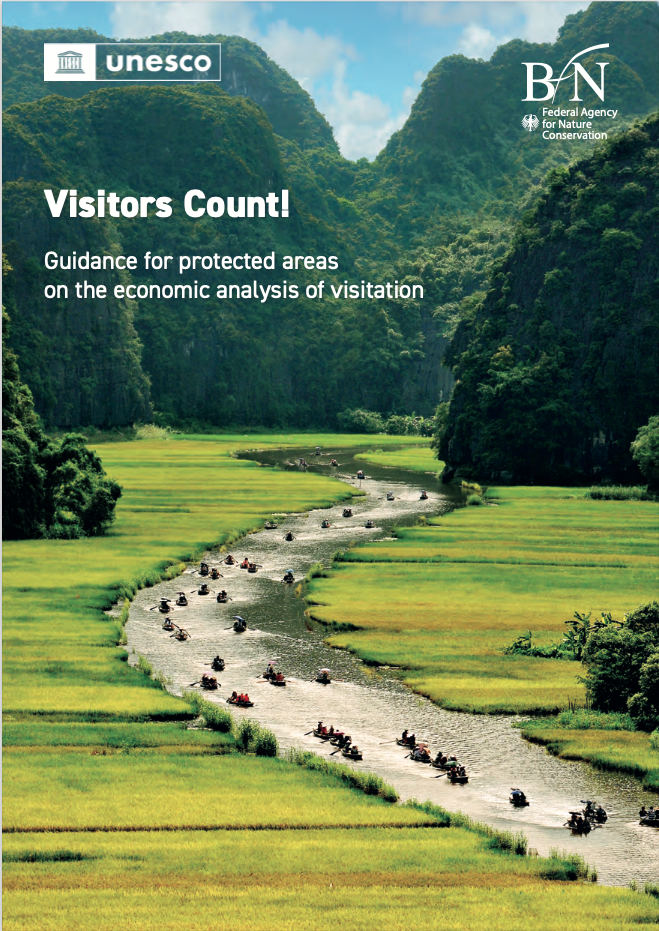


 Tourism is an essential contributor to protected area revenues, conservation finances, and to local livelihoods.
Tourism is an essential contributor to protected area revenues, conservation finances, and to local livelihoods. 

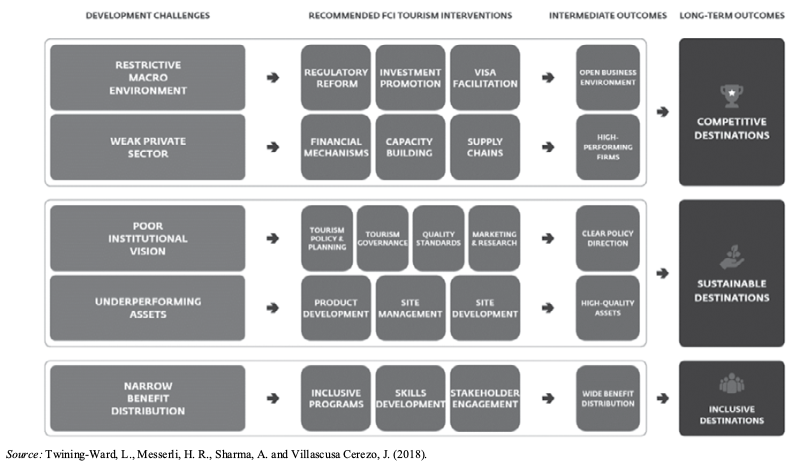

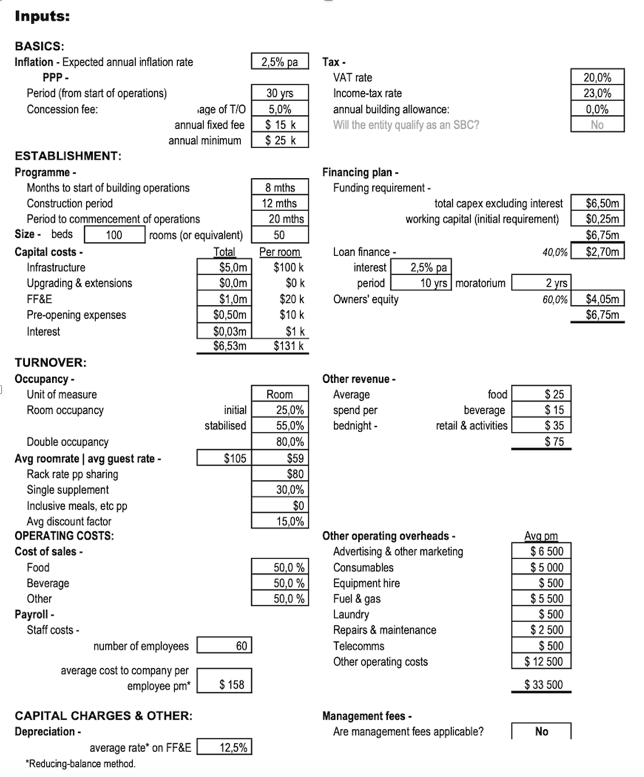







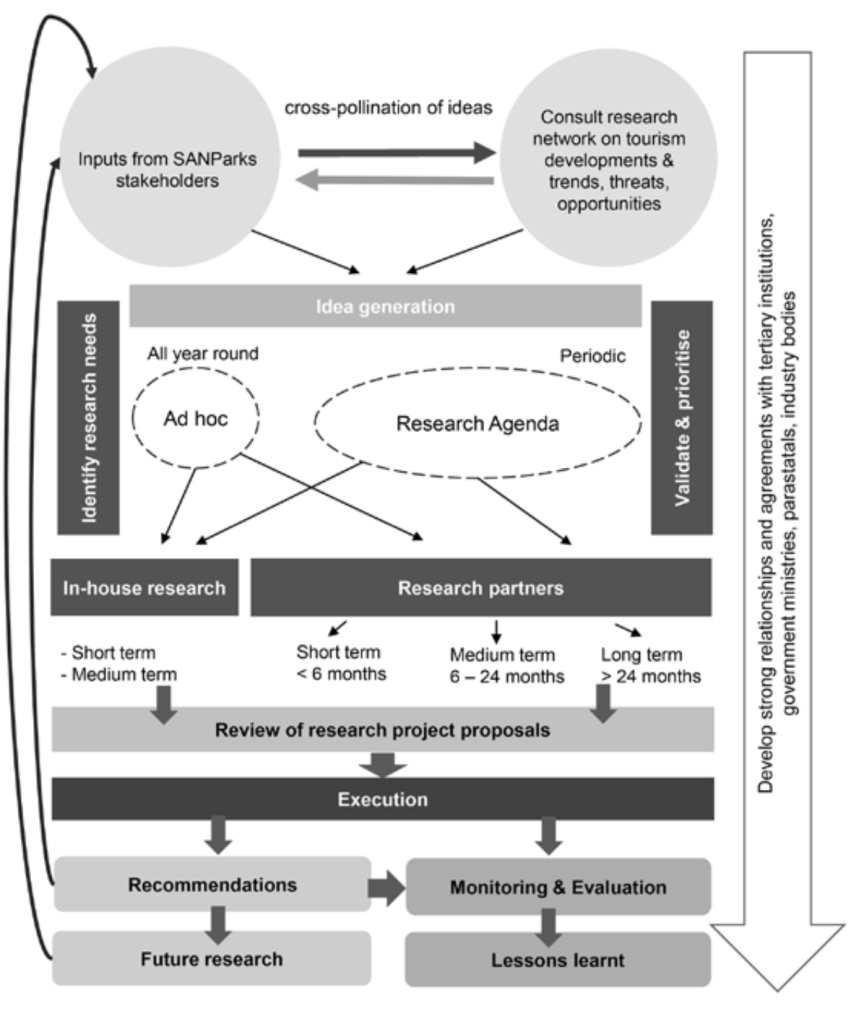








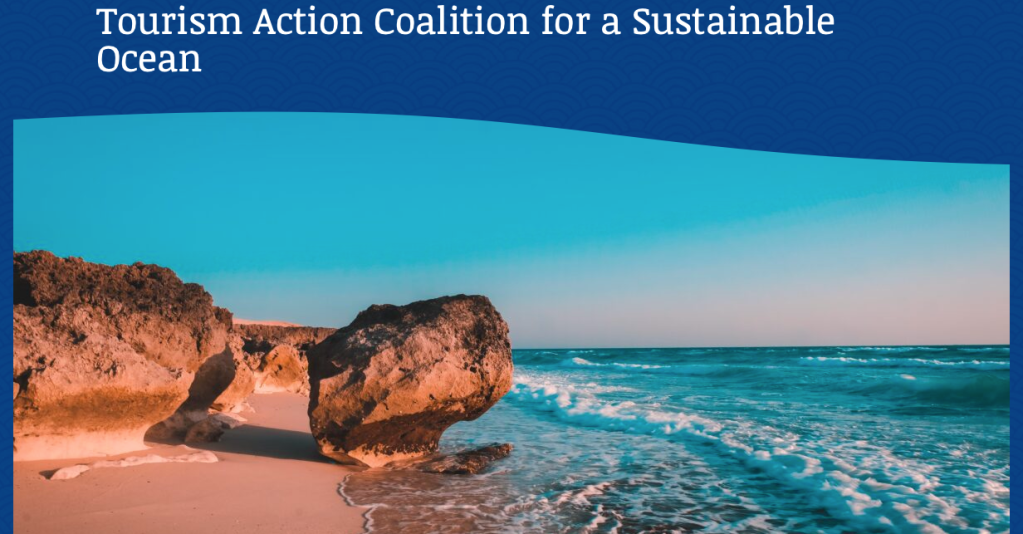

 The
The 
